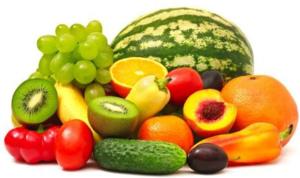Learning how to take supplements properly for preventative care or to assist pre-existing illnesses can be a difficult undertaking. The use of supplements for preventative care and for optimum health is very controversial and many people have opposing views on it. As intricate human beings, we are all very unique and different from one another and our genes, environment, and lifestyle all play a role in figuring out what nutrients our bodies are in need of the most. Hopefully, this article will clear up some uncertainties about what is best for you, as a distinct individual.
It’s important to know the different types, and forms, of vitamins and minerals, and the differences between supplementing with synthetic vs natural. Without this knowledge, it would be almost impossible to understand what is best for you.

Beta carotene and vitamin A are linked together, this is because beta carotene is readily converted into vitamin A by the body. However, beta carotene has similar, and different, benefits to the body than vitamin A does. Beta carotene is also nontoxic, unlike the performed vitamin A which is stored in the liver and can become toxic in large quantities. Paltimate is a water-soluble synthetic form of vitamin A, which is recommended for individuals that have difficulty absorbing fat. However, this form is also stored in the liver and it has a toxicity level as well, somewhere around 100,000 IU taken daily for a long period of time. The active form of vitamin A is found in animal sources, such as fish liver oil from cod, halibut, salmon and shark, beef and chicken liver, eggs and dairy products. Beta carotene is found in dark, leafy greens, and in yellow and orange fruits, like oranges, cantaloupe and carrots. Beta carotene is within a group of carotenoids, which all have important antioxidant powers. The carotenoids include, lycopene (most abundant in tomatoes), lutein, alpha-carotene, and zeaxanthin. When buying a carotenoid supplement, be sure to include all of the carotenoids with a basic dosage of 11,000 to 25,000 IU. Vitamin A daily supplementation should be a minimum of 5,000 to 25,000 IU.
The vitamin B complex group include B1 (thiamine), B2 (riboflavin), B3 (niacin and niacinamide), B6 (pyridoxine), B12 (cobalamin), folic acid, pantothenic acid, biotin, choline, inositol, and PABA (para-aminobenzoic acid). The overall main use for the B complex group in the body is in their performance as coenzymes, who assist with enzyme action. They are necessary for metabolizing carbohydrates, fats and proteins; overall, assisting in cell metabolism. This act may in turn, help with reducing stress. The B vitamins are found in a number of different food sources, such as whole grains, green leafy vegetables, meats, liver, poultry, fish, eggs, nuts and beans. However, the processing of whole grains results in a loss of most of the naturally occurring B vitamins. Common diseases from deficiencies are berberi (thiamin) and pellagra (niacin). The ODI is 25-300 milligrams and specifically for women, add 25-300 mcg for B12, folic acid and biotin. The B vitamins fight for absorption in the intestines, therefore it is important to take all of them together so you do not become deficient in a single B vitamin. If needed, It is safe to take up to about two to three times the amount of the other Bs you are supplementing with. The Bs are water-soluble and there is generally not toxicity.
Vitamin C, ascorbic acid, is a water-soluble antioxidant. Ascorbic acid prevents vitamin A and vitamin E from being oxidized in the body, keeping them effective in the body. High stress and sickness depletes the body of vitamin C, therefore during these times more vitamin C should be taken. Fruits and vegetables are good sources of vitamin C, however it is a very delicate vitamin-very sensitive to heat, light and oxygen and it’s easily destroyed. The natural form of vitamin C is from rose hips, which is very expensive; therefore, most vitamin C with rose hips is synthetic. Bioflavonoids are added to vitamin C to increase its absorption, and minerals are mixed with abscorbic acid to make mineral abscorbates, like calcium ascorbate, magnesium ascorbate and sodium ascorbate. Vitamin C is easily excreted from the body, so toxicity is unusual. Supplementing high levels of vitamin C, around 5,000 milligrams a day, can cause loose stool and intestinal gas. It’s best to take only 500 mg at a time so that the body is able to absorb and make use of it properly. The ODI for vitamin C is 500-5,000 mg.

Vitamin D is technically not a vitamin because our bodies can produce it by sunlight exposure, and in its active form in the body, it acts as a hormone. However, like vitamins, it is very important for good health, especially for mineral absorption and bone mineralization. When combined with calcium, vitamin D has been shown to have anticancer properties; it has also been shown to help treat immunological disorders, such as multiple sclerosis and psoriasis. Vitamin D deficiency is very common among women of childbearing years. Foods are generally low in vitamin D. Fish liver oil and fatty saltwater fish are the most plentiful foods. The two forms of vitamin D are D2 (ergocalciferol) and D3 (cholecalciferol). Vitamin D3 is the preferred form because it occurs naturally. However, both forms become the active hormone in the body after passing through the liver and kidneys. For optimum health, the recommended dosage is 400-800 IU. Toxicity levels seem to be more than 1,000 IU per day, which can lead to hypercalcemia (high levels of calcium in the blood), among others symptoms.
Vitamin E is a fat-soluble vitamin with many health benefits, such as preventing age-related diseases like cancer and cardiovascular diseases. Most of the research done in the past on vitamin E used the compound, alpha-tocopherol; however, new research is being done on the other compounds of vitamin E, like gamma-tocopherol and the tocotrienols showing their benefits as well. Newer research also shows that the synthetic form of vitamin E has about one-eighth the potency of the natural form of vitamin E. Vitamin E also has the capability of protecting vitamin A and C from oxidation, thus keeping them potent in the body. Vitamin E has eight substances, the most active are alpha-, beta-, delta-, and gamma-tocopherol. The naturally occurring form of Vitamin E is the D form, D-alpha-tocopherol. The synthetic form is the DL form, D,L-alpha-tocopherol. It’s recommended to take atleast 400-1,200 IU of the natural form of vitamin E with mixed tocopherols. Very high doses of vitamin E, above 1,200 IU per day, have shown symptoms of nausea, diarrhea, headache and fainting. It is advisable to slowly increase the dose of vitamin E if you would like to increase your current dosage.
Vitamin K is the vitamin needed to clot the blood (coagulation). It is found in food, but it can also be synthesized by bacteria in our intestines. Vitamin K is generally used to describe a group of compounds: K1 is found in food, K2 is produced by the intestines, and K3 is the synthetic form. Deficiencies are rare with vitamin K, usually they are only seen in individuals with malabsorption disorders due to certain bowel or liver problems. The optimum daily intake (ODI) for vitamin K is 80 mcg. The only toxicity that is known by vitamin K is from using the synthetic form, K3, where hemolytic anemia occurs; which is when the red blood cells die faster than the body can replace them.

The vitamin B complex group include B1 (thiamine), B2 (riboflavin), B3 (niacin and niacinamide), B6 (pyridoxine), B12 (cobalamin), folic acid, pantothenic acid, biotin, choline, inositol, and PABA (para-aminobenzoic acid). The overall main use for the B complex group in the body is in their performance as coenzymes (assisting enzyme action). They are also necessary for metabolizing carbohydrates, fats and proteins. The B vitamins are found in a number of different food sources, such as whole grains, green leafy vegetables, meats, liver, poultry, fish, eggs, nuts and beans. However, the processing of whole grains results in a loss of most of the naturally occurring B vitamins. Common diseases from deficiencies are berberi (thiamin) and pellagra (niacin). The ODI is 25-300 milligrams and specifically for women, add 25-300 mcg for B12, folic acid and biotin. The B vitamins fight for absorption in the intestines, therefore it is important to take all of them together so you do not become deficient in a single B vitamin. It is safe to take up to about two to three times the amount of the other Bs you are supplementing with. The Bs are water-soluble and there is generally not toxicity.
As I mentioned earlier, supplementing with vitamins for optimum health is a very controversial topic. Some people believe eating healthy food and exercising regularly is enough for preventative care. However, it must be taken into consideration that our land today is no longer what it used to be 100+ years ago. We have a world population of 7 billion people, in the attempts to feed all of us, the soils are damaged from the over-use of agricultural purposes and from the neglect of treating the soil properly for it’s health. Because of this, our soils are lacking in key vitamins and nutrients, which leads to insufficient foods. Therefore, causing our bodies to have inefficiencies It is important to take a strong multivitamin everyday with food. If you choose to take other vitamins, it is advisable to have your vitamin levels tested in your body before choosing which ones to take in confidence. Otherwise, take the minimum requirements.
Make sure to check out the next article on supplementing with minerals!!
In health and happiness,
Laura B. Leff, MS, HN

